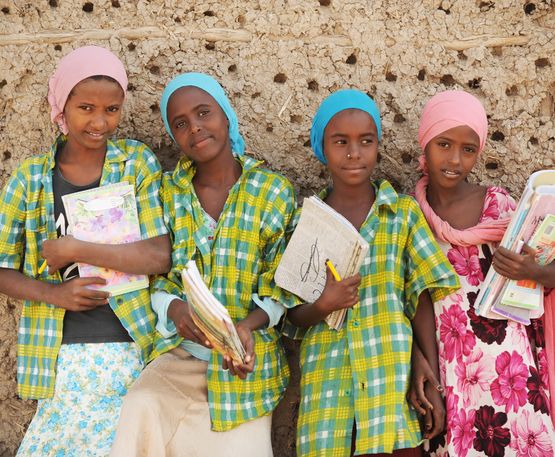Blog Article by Mareike Britten, Head of Global Campaign Coordination, Climate Action Network International (Disclaimer: This blog presents solely the views of the author and not of any affiliated organisations)
In October 2015, South Africa became the sixth country, and the first in Africa to host the International Renewable Energy Conference (IREC). Convened by REN21, IREC is a high-level political conference series hosted by a national government. SAIREC 2015 built on the success and outcomes off the previous events: Bonn, Germany (2004), Beijing, China (2005), Washington, USA (2008), Delhi, India (2010), Abu Dhabi, UAE (2013). Here at SAIREC, all speakers from the IRENA president (Adnan Amin) to the Energy Minister of South Africa agree that the future is powered by Renewable Energy (RE).
Mr Amin stressed that more than 60 % of energy in Africa needs to come from decentralised RE sources to spur economic growth while providing energy access. In many countries, renewables are broadly competitive with conventional fuels, particularly in the power sector and it seems now an undisputable fact that energy access created through renewable energy is the path to job creation, growth, investment and poverty alleviation. In Morocco the ambitious solar plans of the government aim to create 40,000 additional jobs by 2020 and in Mali the government has started a programme to provide 80% of electrification in rural areas through RE.
Renewable energy provided an estimated 19.1% of global final energy consumption in 2013, and growth in capacity and generation continued to expand in 2014. However to achieve the SE4All objective of doubling the share of renewables, the rate of progress will need to increase over 50%. Reduction in global primary energy intensity from 2010-2012 was substantial, but it is only at two thirds of the pace needed to reach the SE4All objective. So during this conference I was wondering; what is in the way?
There are certain obstacles that many speakers have been highlighting at SAIREC that are still in the way of a true Renewable Energy Revolution:
Firstly: Perceived risk among investors pushing up the costs of capital. In general renewable energy technologies are more capital intensive and so have higher up-front costs than fossil fuel equivalents, but have very low fuel costs. This means that energy costs are very sensitive to the capital and particularly the financing costs, which depend on the perceived risks associated with the project.
Secondly: The lack of policy frameworks that enable a market approach rather than a project by project approach.
Thirdly: The lack of knowledge and expertise among policy makers and among the workforce to enable project development, implementation and maintenance.
Fourthly, and this is one obstacle that is not raised in official speeches but in the conversations during the coffee breaks: the vested interests that are profiting from the status quo preventing the needed mind shift among decision makers.
During the conference I was searching for the answers and here are a few:
1. How to get the money flowing?
Of course political stability is a precondition to attract investors, but the government can do much more to decrease risk perception; it can provide preferential loans and grants as well as loan guarantees leveraging private sector investment by overcoming the lack of private financial instruments, facilitating market development, and mitigating risk. In Kenya initiatives are underway to educate the private financial institutions and bankers and IRENA just launched a Virtual Market Place that is supposed to match investors and developers across Africa.
2. The right policies and capacity
Several speakers pointed out the need for credible short, medium and long term targets, backed up by clear governance, e.g. including an action plan designed to remove unnecessary barriers to deployment. It was pointed out that governments and cities that have set themselves ambitious 100% RE targets have spurred transformational discussions rather than discussions about incremental change with their peers opening up new thinking and action. Furthermore adequate remuneration needs to be arranged which recognises the capital intensive nature of the renewable technologies. This could be in form of Feed in tariffs as it is used in many G20 countries or in form of e.g. an auctioning process. In South Africa a RE bidding programme for Independent Power Producers has established almost 6000 MW of RE in a few years despite the Market not being liberalised. While many RE entrepreneurs feel that the Programme needs to be reformed and massively expanded and many civil society groups criticise that this bidding process doesn’t allow for community energy production, it is also felt that the Programme has proved that RE can deliver on time at lower costs than any other fuel source and with many benefits for the community. Many people I spoke to believe that this Programme has opened the doors to massive RE uptake.
However governments need to address also the non economic barriers such as streamline planning and permitting, developing the necessary skills base and providing public information as well as enable technical and market integration necessary to integrate large shares of variable renewables. IRENA launched in January 2014 the African Clean Energy Corridor working intensively with governments from Tanzania to South Africa with the aim to create regional integration, grid connections beyond borders and facilitate exchange. The facilitation of this regional collaboration on assessments, policies and markets will be another stepping stone to speed up RE uptake.
3. Breaking the status quo
There are many vested interests that want to prevent change even if RE can deliver jobs, health benefits and cheaper electricity. The Theory of Change many are operating on assumes that decisions by decision makers are being made on a rational basis. However power politics and interests often get in the way, preventing the needed change. I believe that it is exactly here where civil society needs to cleverly engage and work with other actors finding new allies to change the distribution of power.
During the conference cities as key actors on RE have been moved more and more into the limelight. 60% of the area yet to be build will be urban. Cities are the main cornerstone where all problems (affordable housing, efficient transport, affordable electricity, air quality etc) come together and an integrated approach is needed. Currently urbanisation often leads to poverty increase. However that doesn’t need to be the case. More and more cities are taking the lead to a holistic integrated approach where the move to RE and the implementation of Energy Efficiency play a key role in poverty alleviation.
Organisations working closely with cities towards a future entirely powered by RE have put together a range of recommendations that centre around the need for active citizen and business participation and there are many multi-stakeholder platforms and networks that help cities share their learning and create new ambitions. To push these ambitions and create a bottom up movement that will help break the status quo on a national level, what is needed is the political willingness to act. This is where civil society and voters can play a crucial role making clear that the future they want to live in is one powered by Renewable Energy.



